| |
| CLICK HERE FOR INDEX PAGE |
| |
| SOLAR POWERED CARS |
| V. Ryan © 2006 - 2023 |
| |
| PDF FILE - CLICK HERE FOR PRINTABLE WORKSHEET |
| |
| CLICK HERE FOR POWERPOINT VERSION OF WORKSHEET |
| |
| Solar cars have been developed in the last twenty
years and are powered by energy from the sun. Although they are not a
practical or economic form of transportation at present, in the future
they may play a part in reducing our reliance on burning fossil fuels
such as petrol and diesel. |
| |
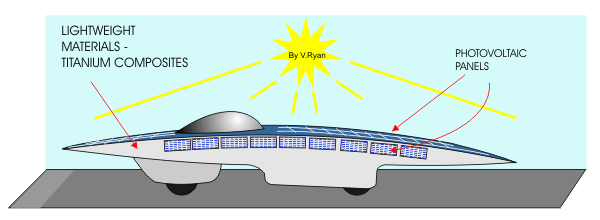 |
A solar powered racing car is shown above. These are
expensive to produce and usually seat only one or two people. The main
cost is due to the large number of expensive and delicate photovoltaic
solar panels that are needed to power the vehicle. Also, many of the
solar powered cars used in races today are composed of expensive,
lightweight materials such as titanium composites. These materials are
normally used to manufacture fighter jets. Carbon fibre and fibre glass
are also used for much of the bodywork. Most of the cars used in races
are hand made by specialist teams and this adds to the expense.
A solar powered vehicle can only run efficiently when the sun shines,
although most vehicles of this type have a battery backup. Electricity
is stored in the batteries when the sun is shining and this power can be
used when sun light is restricted (cloudy). The batteries are normally
nickel-metal hydride batteries (NiMH), Nickel-Cadmium batteries (NiCd),
Lithium ion batteries or Lithium polymer batteries. Common lead acid
batteries of the type used in the average family car are too heavy.
Solar powered cars normally operate in a range of 80 to 170 volts. To
reduce friction with the ground the wheels are extremely narrow and
there are usually only three. |
| |
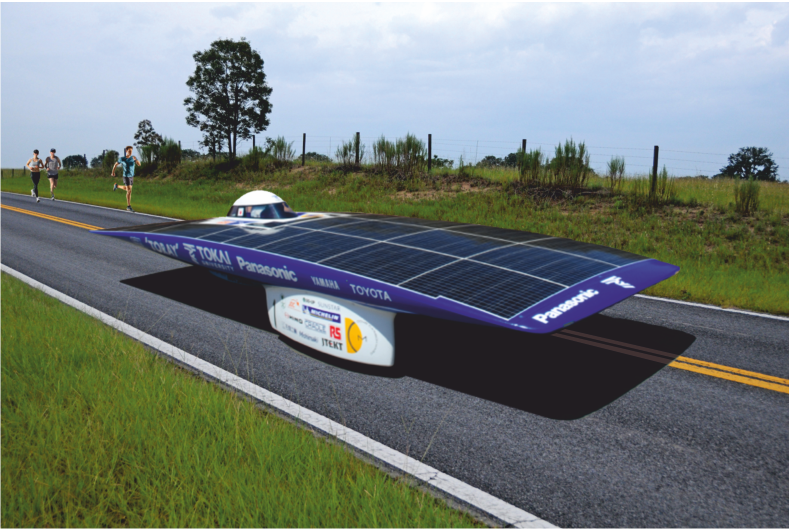 |
| |
|
|
| |
| Some solar powered cars are practical and one is
shown below. This is a solar powered golf cart and it can be used in
sunny climates to carry golfers from one hole to the next. When it is
standing still the solar panels charge up the batteries and it is the
batteries that power the electric motors, directly. As the vehicle is
not in continuous use the batteries have time to charge up before they
are needed. |
| |
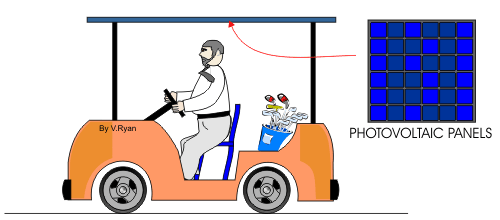 |
| |
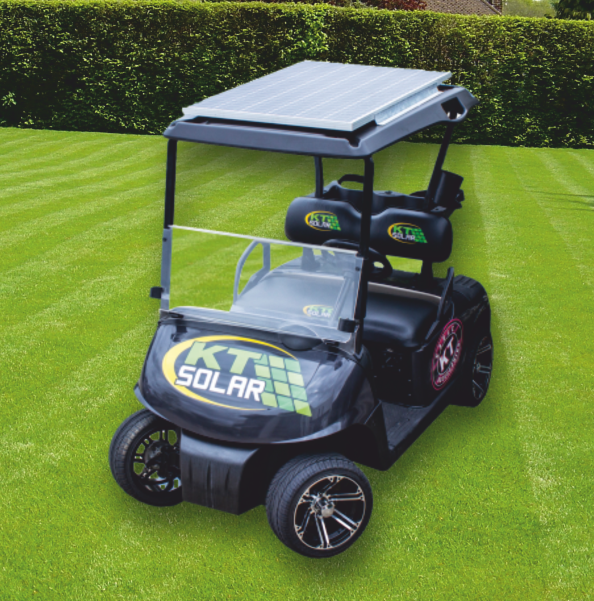 |
| |
|
|
| |
| One of the more realistic ways in which that solar
powered cars could become practical is to charge up their batteries when
they are parked, during the day. Imagine driving the short distance to
work and plugging the car into a set of photovoltaic solar panels.
Whilst you are working the batteries charge up ready for use for the
journey home. The same procedure could be carried out when the car is
parked at home. A combination of solar power and wind power may prove to
be a method of charging the batteries of ‘electric cars’. |
| |
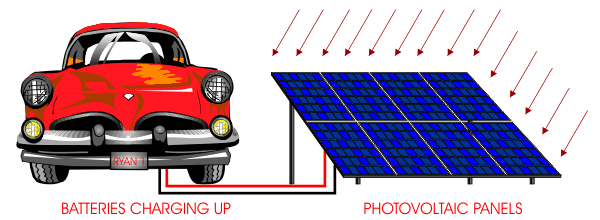 |
| |
| CLICK HERE FOR TECHNOLOGY AND
ENVIRONMENT INDEX PAGE |
| |
| |




